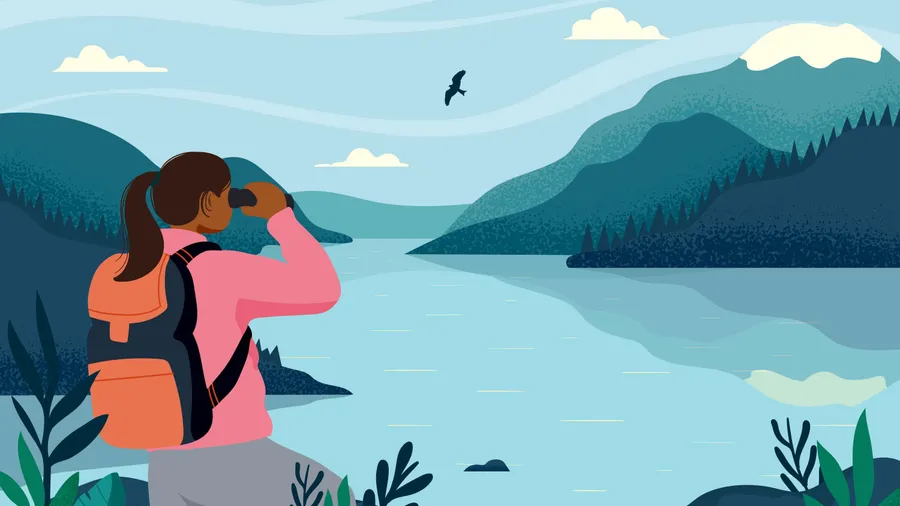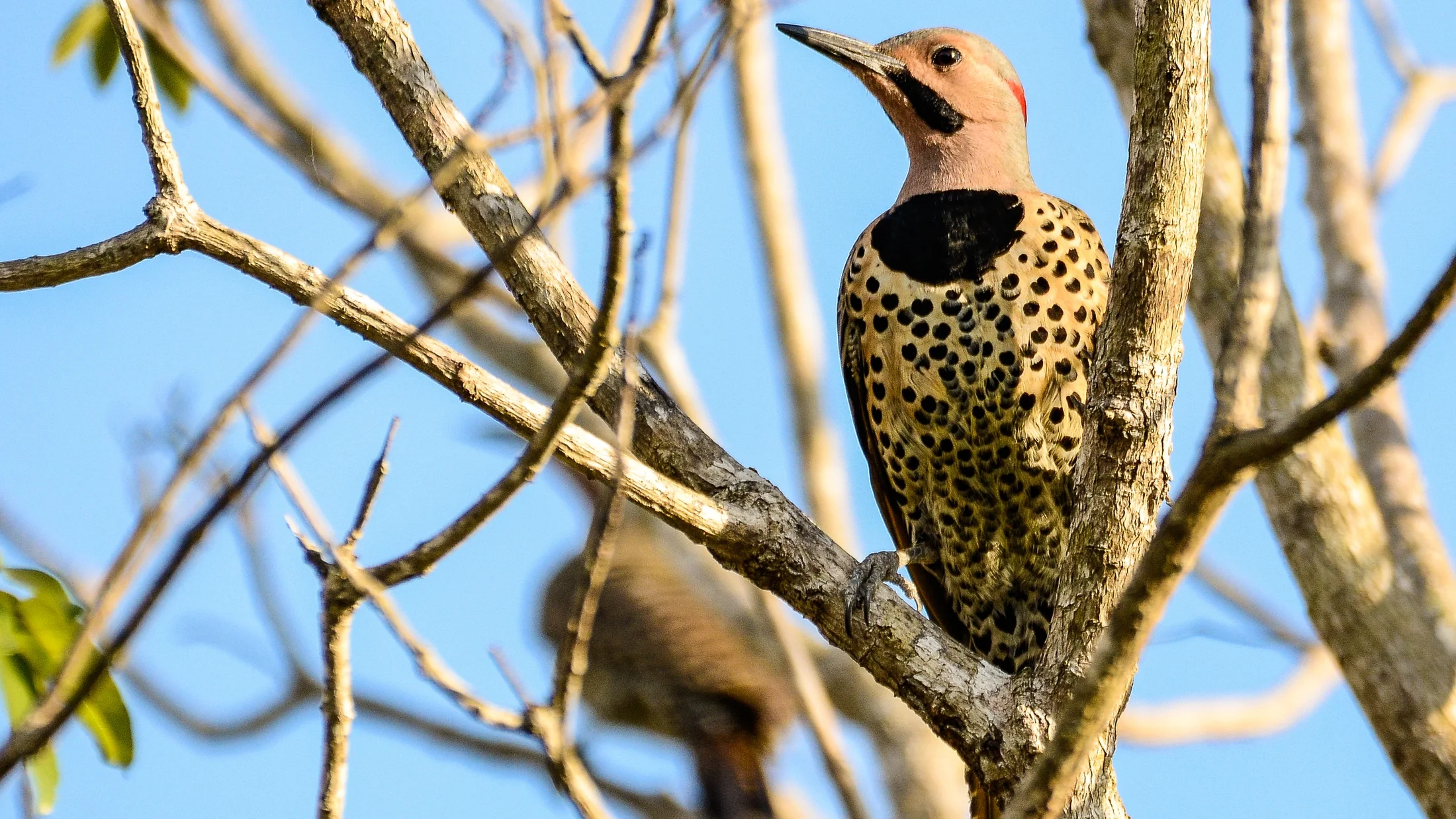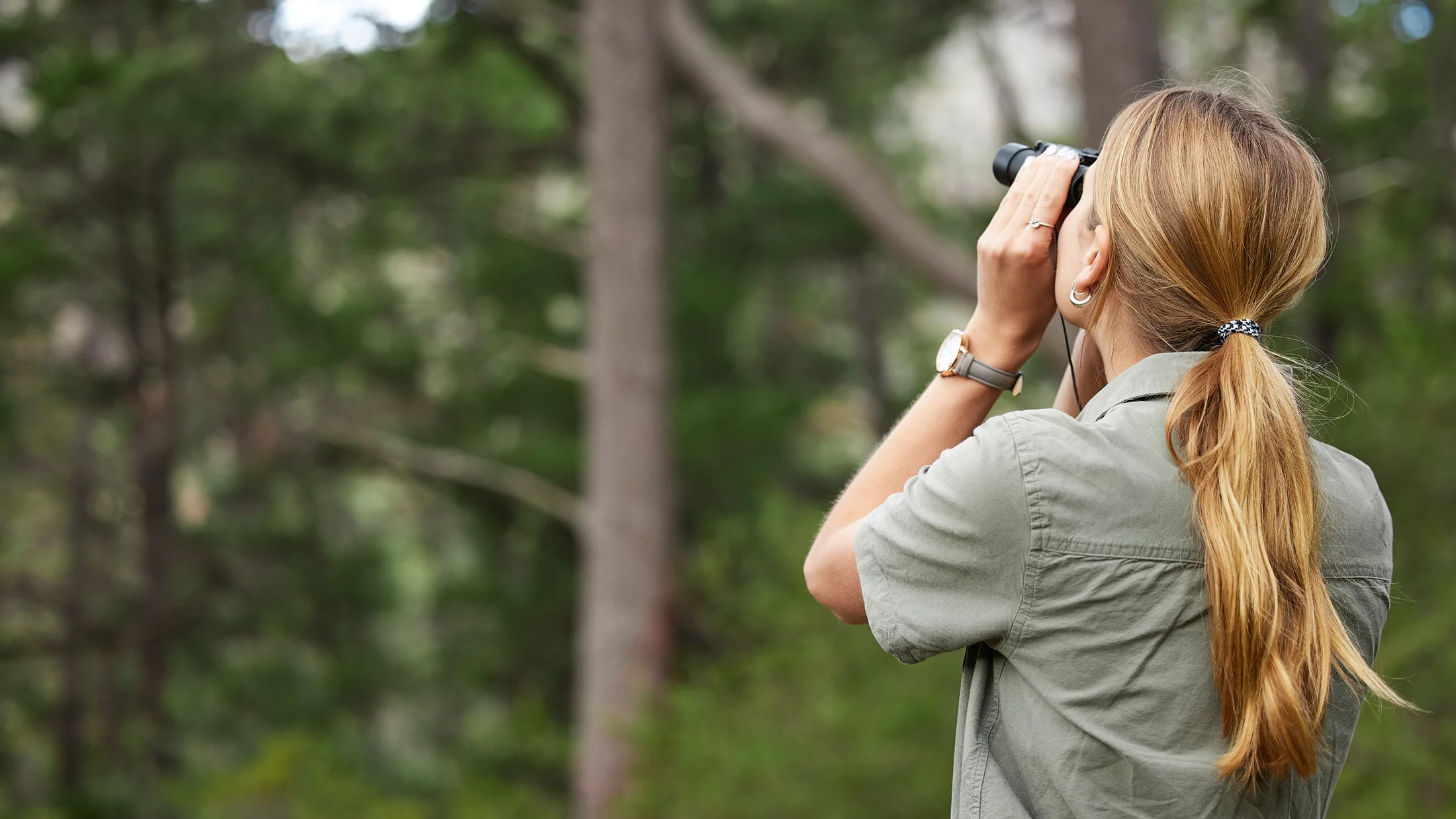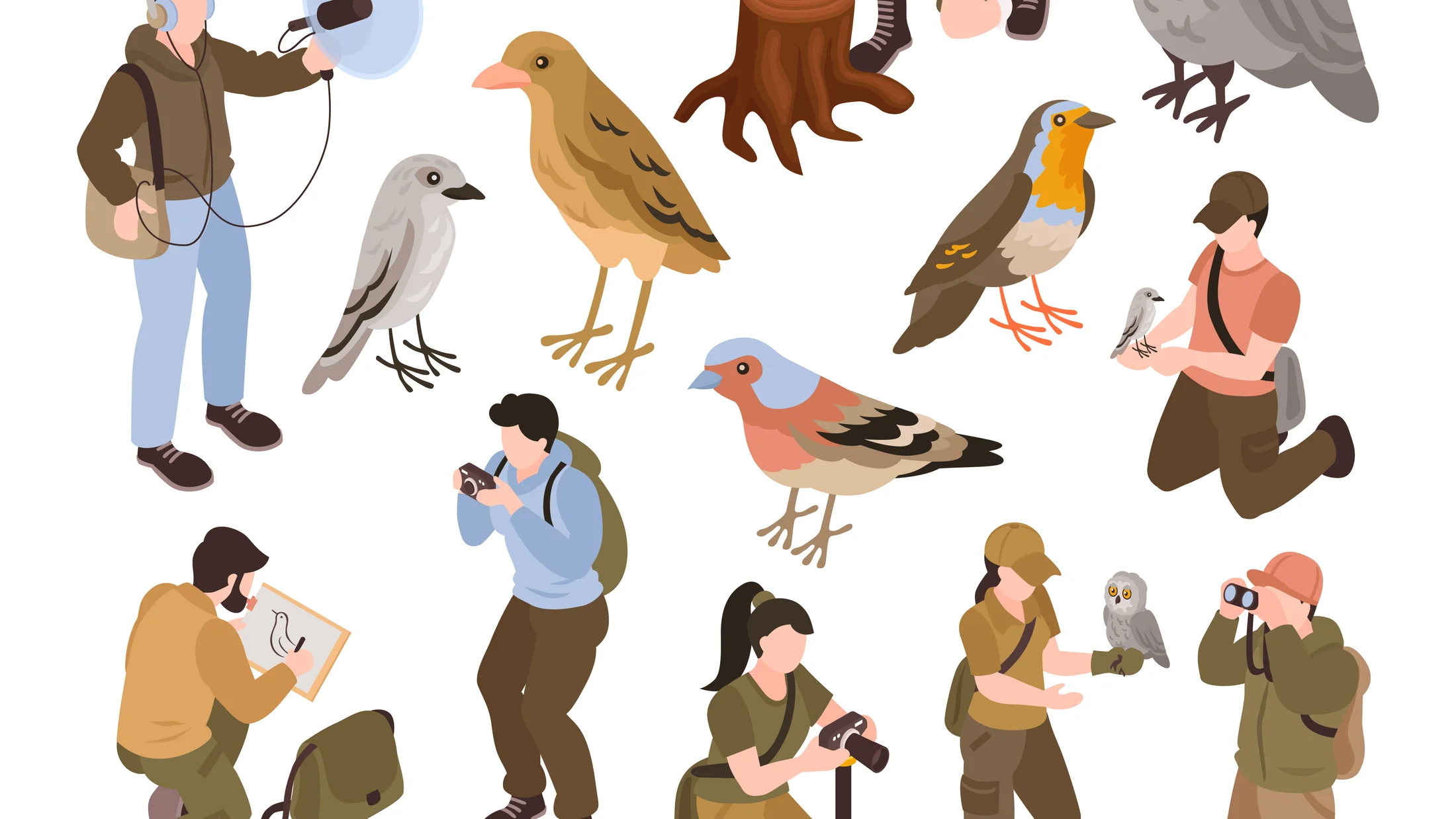Birdwatching Observatories in Spain: The 15 Best Sites (Complete Guide)
Introduction
Spain ranks as the second most bird-diverse country in Europe. Over 600 recorded species transform the territory into a unique ornithological mosaic: from flamingos in salt marshes to bearded vultures on rock faces. Birdwatching observatories allow you to witness these encounters without disturbing the natural behavior of species.
This guide gathers the 15 best observatories in the country, with verified data on key species, optimal visiting times, and access information. You'll find everything from established infrastructure like those at Doñana National Park to landscape-integrated hides like Mas de Bunyol. Each entry includes practical information: coordinates, approach routes, resident and migratory species.
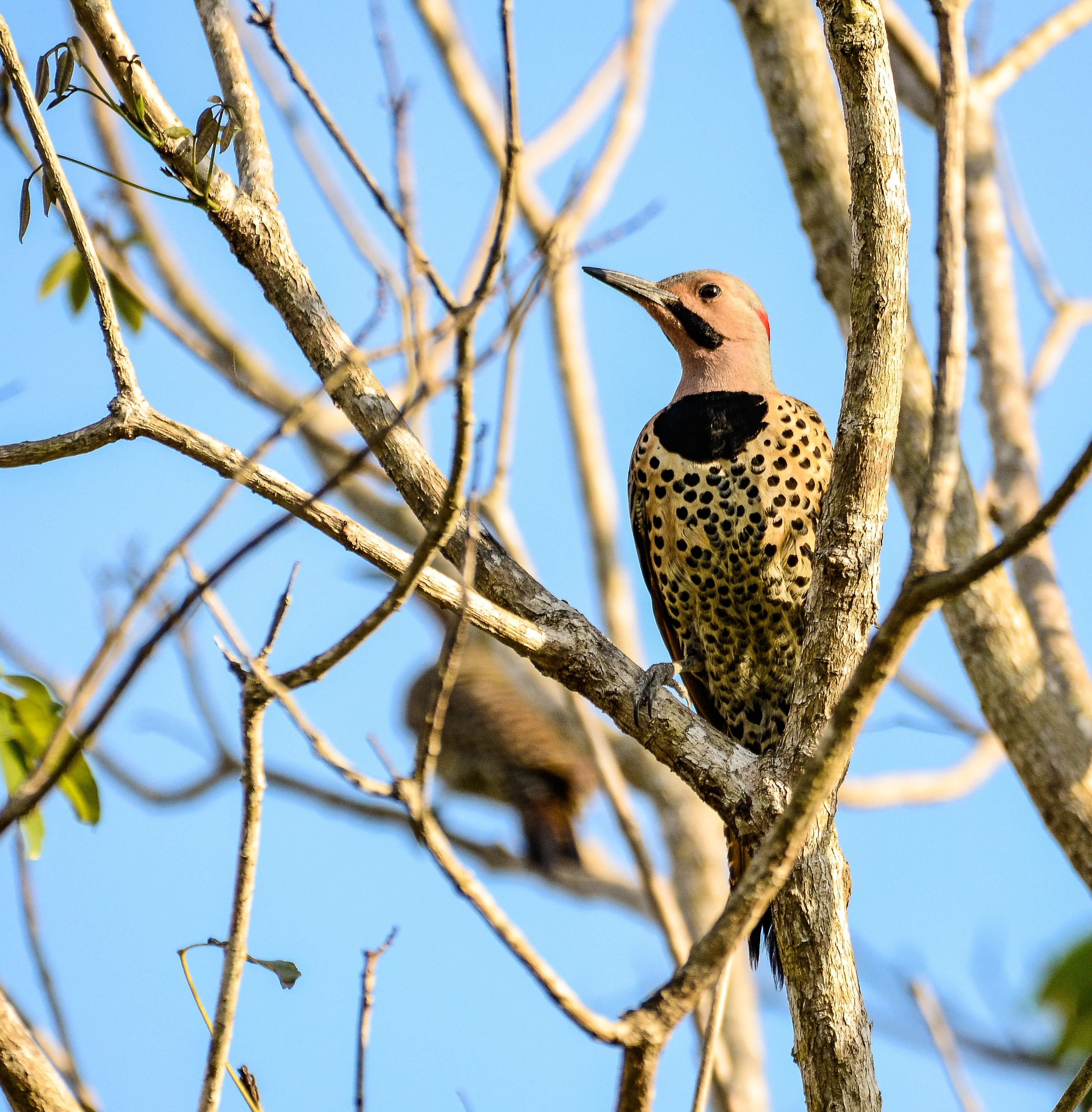
Birdwatching in Spain combines wildlife observation with immersion in conserved territories. The observatories are strategically located: wetlands, gorges, steppes, Mediterranean forests. The network of protected natural areas totals over 15 million hectares, managed with criteria that prioritize biodiversity.
1. Doñana National Park (Huelva-Seville)
Doñana concentrates the largest waterbird colony in Western Europe. The protected area covers 108,000 hectares of marshes, dunes, and scrubland, declared a Biosphere Reserve. According to SEO/BirdLife, over 300 species use the park as breeding, wintering, or migratory stopover zone.
The Guadalquivir marshes serve as refuge for flamingos, spoonbills, purple herons, and glossy ibises. In the scrublands you'll observe Spanish imperial eagles, one of the planet's most threatened raptors with fewer than 600 breeding pairs. The Iberian lynx shares habitat with black storks and marbled ducks.
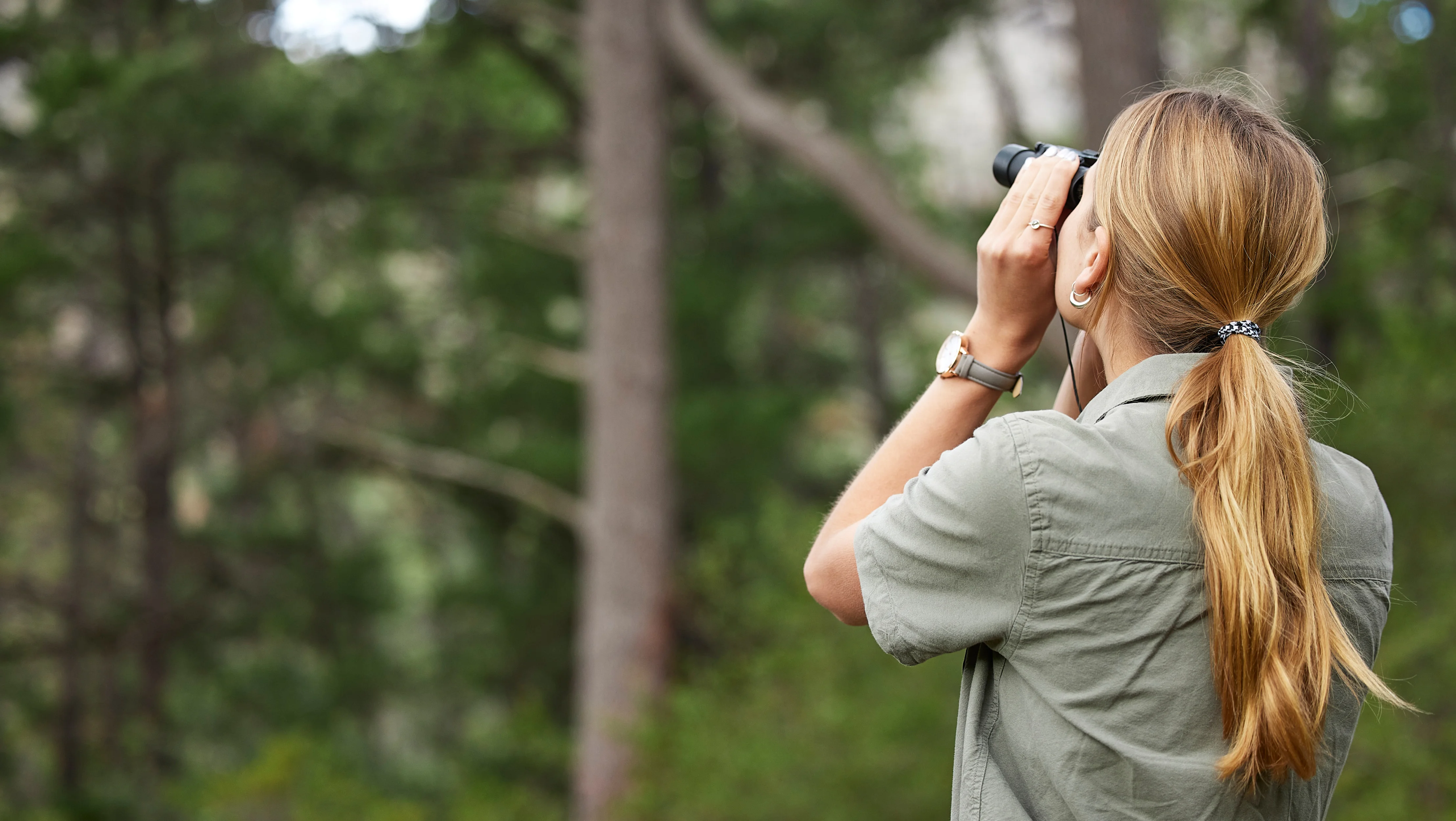
The main observatories are at the José Antonio Valverde Visitor Center (La Puebla del Río) and the Acebrón Palace (El Rocío). Guided tours depart from Sanlúcar de Barrameda in authorized all-terrain vehicles. Free access is restricted; advance booking is mandatory.
The best season spans November to March, when wintering birds from northern Europe colonize the lagoons. In spring you'll observe breeders like bee-eaters, rollers, and whiskered terns. Dawn offers the most favorable light for photography.
Key species: Greater flamingo, Spanish imperial eagle, Eurasian spoonbill, glossy ibis, purple heron
Best season: November-March (wintering birds), April-May (breeding species)
Access: Guided visit mandatory, book 15 days in advance
2. Ebro Delta (Tarragona)
The Ebro Delta is Catalonia's most extensive wetland with 320 km² of rice fields, lagoons, and beaches. Over 300 species transit through this Mediterranean migratory corridor, according to Natural Park data. Breeding colonies include little terns, collared pratincoles, and flamingos.
The observatories are distributed across three sectors: northern hemidelta (Encanyissada, Tancada), Buda Island, and southern hemidelta (La Platjola). Encanyissada is the main lagoon, with three observatories connected by marked trails. In winter, concentrations of northern pintails, common teals, and red-crested pochards gather.

Casa de Fusta, in Deltebre, functions as an interpretation center with high-end telescopes available for visitors. Access is free and open year-round. Bicycle routes allow you to cover more territory: the bike lane network totals 100 km on paved paths between rice fields.
In spring, flooded rice fields transform into feeding zones for waders: dunlins, godwits, redshanks. Post-breeding passage, between August and October, brings migratory raptors: black kites, Montagu's harriers, lesser kestrels.
Key species: Greater flamingo, little tern, collared pratincole, northern pintail, purple heron
Best season: March-May (breeding species), August-October (post-breeding passage)
Access: Free year-round, parking at Encanyissada and Casa de Fusta
3. Villafáfila Lagoons (Zamora)
The Villafáfila Lagoons form the most important endorheic lagoon complex in the northwestern peninsula. The Natural Reserve protects three main lagoons: Grande, Barillos, and Salinas, with 2,700 hectares of cereal steppe. In winter they host over 30,000 ducks and up to 3,000 common geese.
The great bittern, an elusive reed bed bird, finds here one of its last Iberian refuges. The breeding population hovers around 10 pairs, monitored by the Natural Heritage Foundation. Great bustards form flocks of up to 200 individuals in the surrounding páramos, visible from the ZA-504 road.

The Villafáfila Interpretation Center offers elevated observatories with information panels on lagoon ecology. Two marked routes allow you to circle the perimeter: the Lagoons Trail (8 km) and the Camino de Santiago (local section). Access is free, no reservation needed.
Between November and February, the spectacle of common cranes overflies the lagoons at dawn and dusk. Roosts concentrate up to 5,000 birds. The silence of the Castilian steppe amplifies the species' characteristic trumpeting.
Key species: Northern pintail, common goose, great bittern, great bustard, common crane
Best season: November-February (wintering birds), March-April (breeding species)
Access: Free year-round, visitor center open 10:00-14:00 and 16:00-19:00
4. Monfragüe National Park (Cáceres)
Monfragüe protects 18,000 hectares of Mediterranean forest and rock formations, declared a National Park in 2007. The Tagus River cuts through gorges where griffon vulture colonies nest, along with Egyptian vultures, golden eagles, and Spanish imperial eagles. According to the 2023 census, the park harbors 12 pairs of imperial eagles, 2% of the world population.
Salto del Gitano is the iconic observatory: a viewpoint over the Tagus meander where 300 griffon vultures occupy limestone rock ledges. Monfragüe Castle offers 360° panoramic views over holm oak and cork oak dehesas. Portilla del Tiétar allows you to observe black storks in the river channel.
The surrounding dehesas concentrate steppe species: little bustard, stone-curlew, Montagu's harrier. In spring, the song of great spotted cuckoo and golden oriole resonates among cork oaks. Autumn brings red deer rutting, audible from observatories at dawn.
Guided 4x4 tours include access to restricted zones with higher probability of spotting raptors. Tours depart from Villarreal de San Carlos, the only urban nucleus inside the park. Reservations are managed through the visitor center.
Key species: Griffon vulture, Spanish imperial eagle, black stork, Egyptian vulture, eagle owl
Best season: February-June (raptor breeding), September-November (rutting and migratory passage)
Access: Free to main viewpoints, guided visits with advance booking for restricted areas
5. Aragonese Pyrenees: Ordesa Valley and Aigüestortes
The Pyrenees concentrate unique mountain species on the peninsula. The bearded vulture, with 1,000 individuals in the mountain range, finds breeding territories in Ordesa and Aigüestortes. According to the Bearded Vulture Conservation Foundation, 70% of chicks born in Spain come from Pyrenean pairs.
Ordesa Valley offers observatories at La Pradera and Faja de Pelay. Between April and June, thermal currents allow you to see bearded vultures gliding over 1,000-meter walls. The wallcreeper, a small passerine of rocky areas, inhabits crests above 2,000 meters.
Aigüestortes (Lleida) protects glacial-origin lakes surrounded by black pine. The capercaillie, a critically endangered grouse, maintains relict populations in high-altitude forests. The 2023 census registers fewer than 300 individuals across the entire Pyrenees. Observation routes are regulated to minimize disturbance.
The alpine accentor, snowfinch, and black redstart inhabit the subalpine and alpine zones. In winter, the wallcreeper descends to lower elevations, observable from Torla (Huesca) or Boí (Lleida).
Key species: Bearded vulture, capercaillie, wallcreeper, snowfinch, ptarmigan
Best season: April-June (raptor breeding), July-September (high mountain observation)
Access: Free with restrictions in capercaillie breeding zones, information at visitor centers
6. Los Alcornocales Natural Park (Cádiz-Málaga)
Los Alcornocales protects Europe's most extensive cork oak forest with 170,000 hectares. Humidity from the Strait of Gibraltar generates microclimates that sustain relict species like European bee-eater and booted eagle. The park records 200 bird species, according to the Junta de Andalucía.
The canutos, narrow valleys with laurel forests, harbor populations of white-throated dipper and kingfisher. Bonelli's eagle nests in limestone cliffs in the eastern sector. Cork oak and Portuguese oak dehesas are territory for azure-winged magpie, great spotted cuckoo, and cuckoo.
El Aljibe Visitor Center (Alcalá de los Gazules) coordinates guided routes along marked trails. Garganta del Capitán and Subida al Picacho offer viewpoints over the tree canopy. In autumn, acorns attract flocks of wood pigeons and thrushes.
The best season coincides with spring migration: between March and May, trans-Saharan passerines colonize the forest. Post-breeding passage brings soaring raptors: black kite, short-toed eagle, booted eagle.
Key species: Bonelli's eagle, azure-winged magpie, white-throated dipper, European bee-eater, booted eagle
Best season: March-May (spring passage), September-October (post-breeding passage)
Access: Free, marked routes from visitor centers in Alcalá de los Gazules and Jimena de la Frontera
7. Orellana Reservoir and Sierra de Pela (Badajoz)
Extremadura concentrates 70% of Spain's wintering cranes. The Orellana reservoir and Sierra de Pela form a 5,500-hectare complex where up to 20,000 cranes congregate between November and February. Harvested corn fields function as natural feeding grounds.
Roadside observation allows you to see flocks without disturbing them. The reservoir viewpoints, near Orellana de la Sierra, offer panoramic views over the water where cranes sleep. At dawn, trumpeting announces flight toward stubble fields.
Sierra de Pela harbors black vulture colonies, Europe's largest raptor with 2.6-meter wingspan. Extremadura concentrates 70% of the world population, with over 2,000 breeding pairs. Centuries-old cork oaks support nests up to 2 meters in diameter.
The surrounding dehesas are territory for black stork, black-winged kite, and common buzzard. In spring, flowering holm oaks attract bee-eaters, colonial birds that excavate tunnels in clay banks.
Key species: Common crane, black vulture, black stork, black-winged kite, European bee-eater
Best season: November-February (wintering cranes), March-June (raptor breeding)
Access: Free from viewpoints in Orellana de la Sierra, guided visits with reservation
8. Mas de Bunyol Observatory (Valencia)
Mas de Bunyol is a private observatory integrated into 140 hectares of Mediterranean forest in the Hoya de Buñol region. The property conserves native vegetation: Aleppo pine, kermes oak, rosemary, lentisk. Over 120 bird species use the space as feeding and breeding zone.
The observatory has three hides built with local wood, equipped with observation windows oriented toward natural water sources. The design allows photography sessions without altering bird behavior. Water sources attract warblers, chiffchaffs, serins, and finches.
Forest raptors include northern goshawk, sparrowhawk, and tawny owl. In spring, the Eurasian scops owl emits its characteristic call from cork oaks and pines. Eurasian nuthatch and great spotted woodpecker inhabit mature trunks.
Visits are guided by local ornithologists who interpret behaviors and songs. Standard duration is 3 hours, with sessions at dawn or dusk. Reservations are managed through the observatory website, with limited places to ensure tranquility.
Key species: Northern goshawk, Eurasian scops owl, Eurasian nuthatch, Sardinian warbler, great spotted woodpecker
Best season: March-June (breeding), August-October (post-breeding passage)
Access: Guided visit with mandatory reservation, small groups (maximum 8 people)
9. Cabo de Gata-Níjar (Almería)
Cabo de Gata Natural Park protects 38,000 hectares of steppe, cliffs, and salt pans. The zone is an obligatory passage for trans-Saharan migratory birds: swallows, swifts, bee-eaters. The Cabo de Gata salt pans concentrate flamingos, black-winged stilts, and avocets in spring and autumn.
The trumpeter finch, a North African fringillid, appears irregularly in La Isleta del Moro crops. Black wheatear and blue rock thrush inhabit volcanic cliffs. Bonelli's eagle nests in inaccessible crags in the eastern sector.
The observatories are at Cabo de Gata Salt Pans and Rambla Morales. Access is free from marked parking areas. The Salt Pans have a 3-km perimeter trail on flat terrain. In summer, evaporated ponds attract waders in active migration.
The best season for observing seabirds is winter: gannets, shearwaters, and terns overfly the coast. Storms push pelagic species toward Almería Bay.
Key species: Greater flamingo, Bonelli's eagle, black wheatear, trumpeter finch, pied avocet
Best season: March-May and August-October (migration), November-February (seabirds)
Access: Free, parking at Cabo de Gata Salt Pans and La Isleta del Moro
10. Cabrera Archipelago (Balearic Islands)
Cabrera is the Mediterranean's most important maritime-terrestrial National Park. The archipelago protects 10,000 hectares of seabed and 1,318 terrestrial hectares. The absence of terrestrial predators transforms the islands into refuge for seabirds: Cory's shearwater, Audouin's gull, European shag.
Cory's shearwater breeds in cliff crevices, with colonies exceeding 1,000 pairs. Eleonora's falcon, a summer raptor that hunts migratory birds, nests on coastal ledges. The 2023 census registers 25 breeding pairs in Cabrera.
Access is regulated: only 200 daily visitors can disembark on the main island. Excursions depart from Colònia de Sant Jordi (Mallorca) on authorized boats. Minimum duration is 4 hours, including tour of the castle and park museum.
The best time to observe shearwaters is twilight, when they return to colonies after fishing offshore. Eleonora's falcon is observed between August and October, when it hunts migratory passerines.
Key species: Cory's shearwater, Eleonora's falcon, Audouin's gull, European shag, osprey
Best season: April-June (seabird breeding), August-October (Eleonora's falcon)
Access: Excursion with mandatory reservation from Colònia de Sant Jordi, limited quota
11. Santa Pola Salt Pans (Alicante)
Santa Pola Salt Pans form a 2,470-hectare Natural Park on the Alicante coast. Traditional salt extraction maintains water sheets with different salinity levels, creating habitats for flamingos, avocets, and stilts. Over 8,000 flamingos winter in crystallizer ponds.
The Santa Pola Salt Pans Interpretation Center manages three main observatories: Torre de Tamarit, Pinet, and El Saladar. Marked trails connect the hides via wooden walkways. The tower offers panoramic views from 20 meters height.
The marbled duck, an endemic duck in critical danger, uses the salt pans as breeding zone. The Iberian population doesn't exceed 100 breeding pairs. Conservation actions include predator control and water level management.
During migratory passage, the salt pans concentrate waders from northern Europe: dunlins, godwits, redshanks. Surrounding rice fields attract herons and egrets.
Key species: Greater flamingo, marbled duck, pied avocet, black-winged stilt, common tern
Best season: November-March (wintering birds), April-June (breeding)
Access: Free from marked parking areas, visitor center open 10:00-14:00
12. Gallocanta Lagoon (Zaragoza-Teruel)
Gallocanta is Spain's most extensive salt lagoon with 1,400 hectares. The endorheic wetland reaches 1,000 meters altitude in the Jiloca basin. Between November and February it hosts over 100,000 common cranes, the largest Iberian concentration according to SEO/BirdLife census.
The observatories are in Gallocanta, Bello, and Tornos. The Gallocanta Interpretation Center coordinates guided visits at dawn, when cranes take flight toward cereal fields. The trumpeting is audible for kilometers.
The lagoon also harbors ducks, coots, grebes, and little grebes. During migratory passage, rare species appear: ruddy shelduck, ferruginous duck, barnacle goose. Scientific ringing allows studying migratory routes between Scandinavia and southern Spain.
The surrounding cereal fields are territory for larks, pipits, and buntings. Great bustard maintains resident populations in the steppe páramos.
Key species: Common crane, great bustard, common goose, common coot, great crested grebe
Best season: November-February (wintering cranes), March-April (spring passage)
Access: Free from observatories in Gallocanta, Bello, and Tornos, guided visits with reservation
13. Santoña Marshes (Cantabria)
The Marshes of Santoña, Victoria, and Joyel form the northern peninsula's most important wetland with 6,500 hectares. The reserve hosts over 120 waterbird species, including wintering populations of common goose, spoonbill, and dunlin. During migratory passage, Arctic waders transit: curlew, bar-tailed godwit, knot.
The main observatories are in Colindres, Santoña, and Cicero. The Santa Olaja Mill, in Santoña, functions as interpretation center with terrestrial telescopes. Wooden trails allow you to circle the perimeter without sinking in mud.
Eurasian spoonbill breeds in mixed colonies with herons in reed beds. Breeding populations hover around 50 pairs. In winter, roosts concentrate up to 300 spoonbills from Atlantic colonies.
The marshes are surrounded by mixed oak and beech forests where middle spotted woodpecker, short-toed treecreeper, and marsh tit inhabit. Monte Buciero offers viewpoints over the bay.
Key species: Eurasian spoonbill, common goose, red knot, Eurasian curlew, osprey
Best season: August-October (post-breeding passage), November-February (wintering birds)
Access: Free from observatories in Colindres and Santoña, visitor center at Santa Olaja Mill
14. El Hondo Reservoir (Alicante)
El Hondo protects 2,495 hectares of reed beds, salt pans, and artificial ponds in southern Alicante. The Natural Park is habitat for white-headed duck, an endemic duck with fewer than 4,000 individuals across the western Mediterranean. El Hondo's population hovers around 50 breeding pairs.
The observatories are distributed across two sectors: Poniente (Elche) and Levante (Crevillent). The Rincón del Pájaro visitor center manages guided routes in small groups. Wooden walkways cross reed beds where little bittern, purple swamphen, and whiskered tern nest.
The surrounding salt pans attract flamingos, avocets, and stilts. In winter, ponds concentrate ducks: mallard, shoveler, common pochard. Migratory passage brings waders and terns.
The best season to observe white-headed duck is spring, when males display breeding plumage and perform courtship displays. Reed beds offer refuge to marsh passerines: aquatic warblers, great reed warblers, bearded tits.
Key species: White-headed duck, little bittern, purple swamphen, whiskered tern, aquatic warbler
Best season: March-June (breeding), August-October (migratory passage)
Access: Free with prior registration at visitor center, guided routes with reservation
15. Mundaka Estuary and Urdaibai (Biscay)
The Urdaibai Biosphere Reserve protects 22,000 hectares of estuary, marsh, and oak forest in the Basque Country. The Oka River mouth forms an estuarine ria where over 20,000 waterbirds winter: ducks, dunlins, godwits. Migratory passage concentrates Arctic waders in August and September.
The observatories are at Torre Madariaga (Busturia) and San Cristóbal (Gautegiz-Arteaga). The tower has terrestrial telescopes and information panels on intertidal ecology. Tides uncover mud rich in invertebrates: polychaetes, bivalves, crustaceans.
Eurasian spoonbill and little egret breed in mixed colonies in rush beds. Common kingfisher and common sandpiper frequent tidal channels. Hillside oak forests harbor middle spotted woodpecker, short-toed treecreeper, and long-tailed tit.
In winter, black-necked grebe and great crested grebe concentrate in open waters. Yellow-legged gulls and black-headed gulls form roosts on sandbanks.
Key species: Eurasian spoonbill, dunlin, bar-tailed godwit, common kingfisher, little egret
Best season: August-October (migratory passage), November-February (wintering birds)
Access: Free from observatories at Torre Madariaga and San Cristóbal, marked routes through marshes
Essential Birdwatching Equipment
A day of observation requires specific equipment. Binoculars are the fundamental tool: 8x42 or 10x42 models offer balance between magnification and brightness. Reference brands include Swarovski, Zeiss, Leica. Investment ranges from €300 to €2,000 depending on optical quality.
The spotting scope extends observation range in open spaces: lagoons, steppes, coasts. Models with 80-100 mm objective capture sufficient light to identify details at 500 meters. The tripod should be sturdy and allow quick adjustments.
The field guide is immediate reference for identification. The most complete are Collins Bird Guide by Svensson et al., and the SEO/BirdLife Guide to Birds of the Iberian Peninsula. Mobile applications like Merlin Bird ID complement with songs and photographs.
Clothing should be discreet: green, brown, gray tones. Avoid bright colors that alert birds. Waterproof hiking boots are essential in wetlands. In summer, sun protection and water; in winter, thermal layers and windbreaker.
Ethics and Best Practices
Bird observation requires respect for wildlife and habitats. SEO/BirdLife recommends maintaining minimum distances: 50 meters with common species, 100 meters with raptors, 200 meters with breeding colonies. Movements should be slow and silent.
Don't play recorded songs without authorization. Artificial playback alters breeding and territorial behaviors. In sensitive zones, recordings are prohibited by regional regulations.
Respect signage and fenced perimeters. Exclusion zones protect nests and breeding zones during critical season (March-July). Penalties for disturbance to protected wildlife reach €6,000 according to state legislation.
Don't leave waste or alter the environment. Trails are designed to minimize impact. Leaving the path compacts soil, damages vegetation, and stresses wildlife. The golden rule: leave the space as you found it.
Conclusion
The 15 observatories gathered in this guide represent Spanish ornithological diversity: from coastal wetlands to alpine mountain ranges. Each space protects unique species and offers established infrastructure for responsible observation. Verified data on access, species, and seasons allow you to plan visits with guarantees.
The network of protected natural areas in Spain totals over 15 million hectares managed with conservation criteria. Bird observatories are educational tools that connect citizens with biodiversity. Birdwatching combines science, sustainable tourism, and direct contact with wildlife.
The best observation happens in silence, with patience and knowledge of animal behavior. Birds are indicators of environmental health: their presence signals functional ecosystems. Protecting their habitats is protecting complete territories, with benefits that transcend ornithology.
